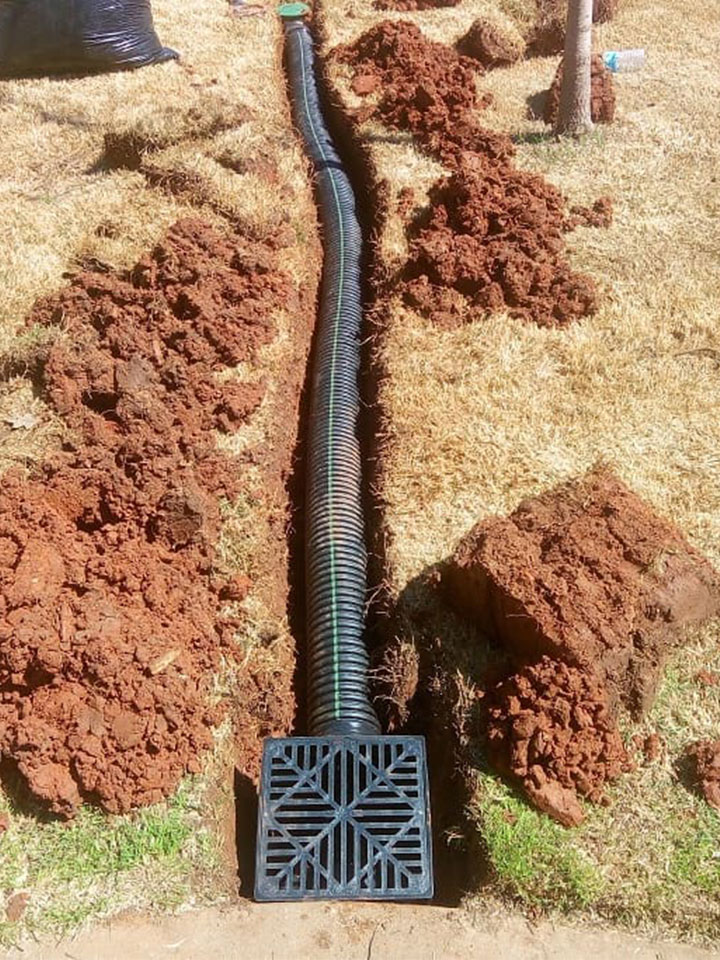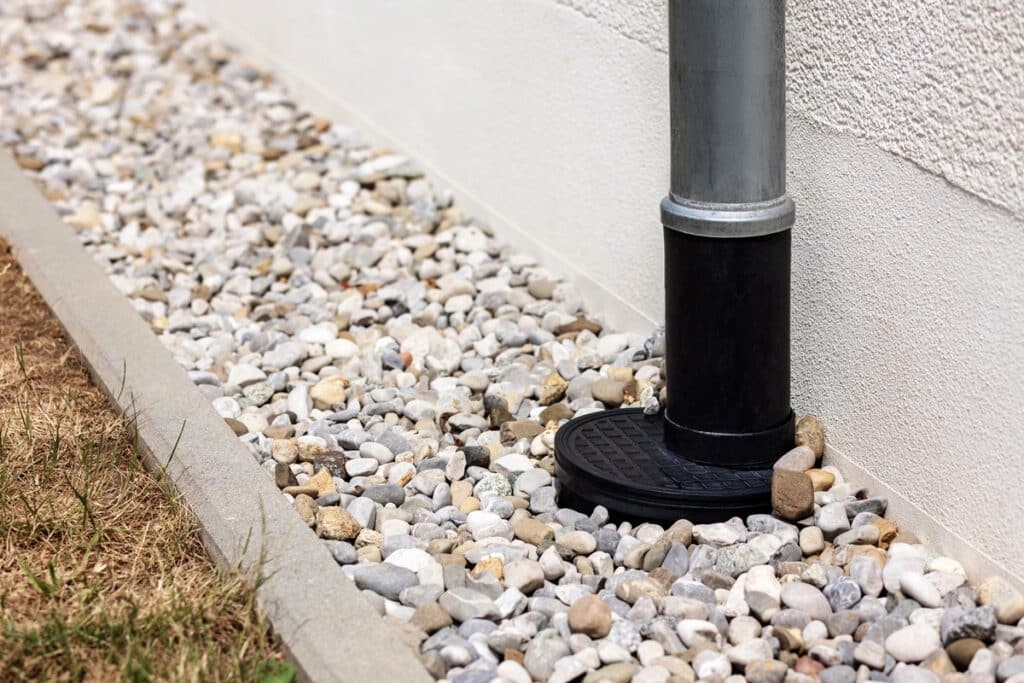Portland French Drain Designs That Actually Work
Portland French Drain Designs That Actually Work
Blog Article
The Crucial Guide to Keeping Your French Drain for Resilient Efficiency
Maintaining your French drain is crucial to its efficiency and your building's protection. Regular checks can save you from expensive repairs and water damages. You'll would like to know what indications to search for and just how commonly to evaluate your system. And also, recognizing the cleansing process can make a substantial difference. Allow's explore the essential steps for ensuring your drainpipe functions well for several years to find.
Comprehending the Function of a French Drainpipe
A French drain is an essential part in taking care of water around your home. It directs excess water away from your structure, protecting against flooding and damage. When hefty rainfall falls, the drain accumulates water through a perforated pipeline buried in gravel. This system allows water to flow openly, lowering pressure on your cellar wall surfaces and minimizing the risk of leaks.You may wonder exactly how it functions in practice. As water saturates the dirt, gravity pulls it towards the drainpipe. The perforated pipeline catches this water, transferring it to a marked drainage location or storm sewage system. This process maintains your lawn dry and protects your home's structural integrity.Understanding how a French drainpipe features is crucial to appreciating its value. By properly transporting water away, it helps preserve a dry and safe living environment. Keeping your French drainpipe in top condition guarantees you stay clear of costly repairs down the line.
Routine Assessments: What to Try to find
Beginning by examining for any kind of clogs that might be blocking water flow when you're examining your French drain. Take notice of indications of surface erosion around the drain, as this can show possible concerns. Normal assessments will help maintain your drain system operating efficiently.
Clogged Drain Assessment
Exactly how can you inform if your French drain is obstructed? First, expect water merging in your lawn, especially after heavy rain. That's a red flag if you notice areas where water collects instead of draining. You ought to likewise examine the drain electrical outlet; if water isn't spurting as it should, there's most likely an obstruction. Listen for unusual gurgling audios, which can indicate trapped air. Furthermore, check the drain's surface area for any type of vegetation growth, as roots can penetrate and block the system. Ultimately, if you smell mildewy smells, it could aim to stagnant water brought on by a clog. Regularly examining these signs can assist you maintain your French drainpipe effectively and avoid expensive fixings.
Surface Area Disintegration Check

Cleansing Your French Drainpipe: Step-by-Step Overview
Cleaning your French drainpipe is necessary for keeping it operating appropriately. You'll need some specific devices and a clear procedure to ensure every little thing runs smoothly. Allow's walk through the steps and ideas for maintaining your drainpipe effectively.
Tools You'll Require
To tackle the job of cleansing your French drain efficiently, you'll intend to gather a few crucial devices. First, grab a strong set of gloves to protect your hands from particles and sharp things. A tiny shovel or trowel will certainly help you remove dust or blockages around the drain. For cleaning out the interior, a plumbing's snake or a high-pressure water nozzle can be unbelievably valuable. You'll likewise need a bucket for gathering any particles you take out. Having a garden hose pipe on hand will certainly make it less complicated to wash out the drainpipe and assure it's moving efficiently. With these tools prepared, you'll be set for a complete cleaning session!
Cleaning Refine Steps
Beginning by examining the location around your French drain for any type of visible debris or clogs. Eliminate fallen leaves, branches, or dirt that might obstruct water circulation. Next off, inspect the inlet and outlet locations; clear any obstructions to guarantee proper drain. Make use of a yard pipe to flush the drain, guiding water into the inlet. This aids displace any type of built up sludge or sediment. If you see relentless clogs, think about utilizing a plumbing's serpent to damage them up. After cleansing, examine the gravel around the drain; renew it if it's cleaned away. Validate the drainpipe covers are intact and firmly in area to avoid particles from getting in. Normal cleansing maintains your French drain functioning properly.
Upkeep Frequency Tips
While regular maintenance is crucial for your French drain's durability, understanding exactly how usually to maintain it can make all the difference. Ideally, you must check your French drain at the very least twice a year, ideally in springtime and autumn. After heavy rains or snowmelt, look for obstructions or particles. If you notice any type of standing water, it's time Learn More Here to cleanse your drain.In locations with heavy vegetation, more constant maintenance-- about every 3 months-- may be necessary. Additionally, think about cleansing your French drainpipe after significant tornados or if you observe water pooling in your yard. By staying aggressive, you'll guarantee your French drainpipe features efficiently and safeguards your residential or commercial property from water damages. Normal checks will save you money and time in the lengthy run.
Determining Typical Concerns and Their Solutions
When you notice water merging in your yard or damp areas in your cellar, it's important to determine typical concerns with your French drainpipe and apply effective remedies. One constant problem is blocking, typically triggered by debris like leaves or debris. To repair this, you can use a pipes snake or a high-pressure water jet to clear blockages.Another problem could be improper incline. Water won't move away from your home if your drain isn't sloped appropriately. You can change see here now the incline by excavating and repositioning the drain pipe.Lastly, check for damages or splits in the drainpipe itself. If you discover any, replacing the harmed areas is necessary for peak performance. By addressing these concerns immediately, you'll aid assure that your French drainpipe remains to operate efficiently, securing your residential or commercial property from water damages and maintaining a dry, secure setting.
Seasonal Maintenance Tips for Your French Drain
Resolving typical issues with your French drainpipe is just the initial step in assuring its lasting performance. Seasonal upkeep is important for peak efficiency. In the springtime, eliminate leaves and particles that may have accumulated during wintertime. Inspect for any type of blockages in the outlet or capture container, as water needs a clear course to move freely.During summer, examine your drain for any kind of signs of changing or working out dirt. Make specific it's still level and working effectively. As loss techniques, tidy out any kind of fallen entrusts to protect against obstructions prior to wintertime arrives.In winter, look for freezing temperatures. Make sure your drainpipe isn't at risk of cold if you live in a chilly climate. Shielding subjected pipes can aid. Regular checks and prompt maintenance can avoid costly repairs and keep your French drainpipe working effectively year-round. Keep proactive and appreciate satisfaction understanding your drainage system remains in excellent shape!
When to Call in a Specialist
Knowing when to contact a professional can save you time and prevent more damage to your French drain. If you discover persistent standing water in your lawn, it's a clear sign that your drainpipe may be clogged or harmed. Do not neglect visit the website odd odors, as they can show sewage backup or decay, which requires immediate attention.If you locate that your drain isn't operating properly after efforts to clean or keep it, it's time to connect for expert assistance. Furthermore, if you're uncertain concerning the underlying problems or do not have the needed devices, employing an expert can give peace of mind.Finally, if your French drainpipe is old or has actually experienced substantial wear and tear, specialist assessment can establish whether fixings or full substitute is needed. Trust the experts to guarantee your water drainage system works effectively for many years to find.
Tips for Stopping Future Drainage Problems
To keep your French drainpipe working successfully, routinely evaluating and keeping it can make all the distinction. Start by clearing debris, leaves, and dirt from the surface area and drainpipe openings. This prevents clogs that can result in water back-up. Inspect the gravel around the drainpipe; if it's compressed or deteriorated, consider including fresh crushed rock to maintain ideal flow.Next, divert water far from your drain by ensuring rain gutters and downspouts are clear and directing water at the very least 3 feet far from your structure. On a regular basis inspect for any kind of indicators of damages or drooping. If you discover concerns, address them immediately.Finally, take into consideration setting up a filter or a catch basin to catch larger debris before it enters the drainpipe. By remaining proactive with these suggestions, you'll reduce the threat of future water drainage problems and maintain your French drainpipe in top form.
Often Asked Inquiries
Exactly how Long Does a French Drainpipe Commonly Last?
A French drainpipe commonly lasts around 30 to 40 years, depending upon the products used and upkeep (Portland French Drain). If you stay up to date with regular checks, you can prolong its life-span also additionally
Can I Mount a French Drain Myself?
Yes, you can install a French drainpipe yourself if you've obtained the right devices and knowledge. Just make sure to prepare thoroughly, adhere to regional policies, and guarantee proper drainage to avoid future issues.
What Products Are Made Use Of in a French Drainpipe?
You'll need perforated pipeline, crushed rock, landscape material, and a strong water drainage pipe for your French drain. These materials aid redirect water successfully, stopping flooding and maintaining your residential property safe and dry from water damage.

Is an Authorization Required to Set Up a French Drainpipe?
You'll likely require a permit to install a French drainpipe, depending upon local laws. Talk to your municipality to ensure you comply with any type of essential guidelines and prevent prospective concerns throughout installation.
What Are the Expenses Associated With French Drain Upkeep?
Keeping a French drainpipe commonly costs in between $100 and $500 annually. You'll need to think about expenditures for cleaning, fixings, and assessments. Regular maintenance aids prevent larger costs and warranties your system operates effectively for years - Portland French Drain. When you're inspecting your French drain, start by examining for any clogs that may be obstructing water flow. By staying positive, you'll guarantee your French drainpipe functions effectively and safeguards your residential or commercial property from water damages. When you notice water pooling in your lawn or damp areas in your basement, it's crucial to recognize typical problems with your French drainpipe and carry out effective options. You can readjust the incline by digging and rearranging the drainpipe pipe.Lastly, check for damage or fractures in the drain itself. Examine the gravel around the drain; if it's compressed or deteriorated, consider adding fresh crushed rock to maintain ideal flow.Next, divert water away from your drainpipe by ensuring rain gutters and downspouts are clear and directing water at least 3 feet away from your foundation
Report this page